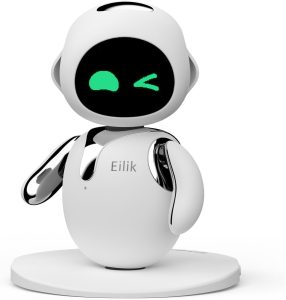How Apple is Revolutionizing AI Updates

When Apple releases new versions of their AI models, users often face a mix of improvements and unexpected issues. This can be frustrating for those who rely on these models for daily tasks. However, Apple is working to make these transitions smoother, aiming to minimize disruptions and enhance user experience.
By focusing on reducing inconsistencies, Apple aims to ensure that AI updates don’t disrupt the functionality users depend on. This new approach could lead to more reliable and user-friendly AI models, setting a new standard in the tech industry.
Challenges with Current AI Updates
When a new version of a language model is released, users expect improvements, not regressions. However, updates can bring new issues, forcing users to relearn model interactions. This is a problem Apple aims to solve.
For those who rely on large language models (LLMs), it can be frustrating when a favorite prompt suddenly stops working after an update. Developers often fine-tune models to reduce errors and glitches, but these tweaks sometimes disrupt functionality that users depend on.
Apple’s New Approach
Apple researchers are developing a method to make transitions between old and new AI models smoother. The goal is to address ‘negative flips’ where an AI model fails at tasks it previously did well.
Researchers devised metrics to pinpoint differences between versions of an LLM. By comparing Meta’s Llama 1 and Llama 2, they taught a specialized LLM to flag discrepancies, reducing inconsistencies by about 40%.
Real-World Implications
Users often judge AI models by performance metrics, but user experience is just as crucial. Apple’s research highlights that tech companies are focusing on reducing inconsistencies to improve overall usability.
This focus on user experience means that future updates might be less disruptive, allowing users to continue their tasks without re-learning the model’s quirks. It’s an important step forward in making AI more user-friendly.
Technical Details and Innovations
The compatibility model developed by Apple works by analyzing various training data sets and identifying discrepancies. This analysis is crucial for understanding where and why inconsistencies occur.
By focusing on compatibility rather than just improvements, Apple’s new method could set a standard for future AI model updates. This approach can be especially beneficial for tasks requiring precise, reliable outcomes.
In addition to reducing inconsistencies, this method can also provide insights into the evolution of AI models, helping developers understand how changes impact performance and usability.
Broader Context of AI Development
The issue of AI model inconsistencies isn’t unique to Apple. Many tech companies encounter similar challenges, indicating a broader industry need for solutions like Apple’s compatibility model.
If successful, Apple’s approach could inspire other companies to adopt similar methods, leading to industry-wide improvements in AI model updates. This could result in a more stable and reliable AI landscape.
Such advancements also tie into the growing focus on ethical AI, as reducing inconsistencies can help ensure that AI systems behave predictably and fairly, which is crucial for user trust and safety.
User Experience at the Forefront
Apple’s research underscores the importance of user experience in AI development. By prioritizing stability and reliability, Apple aims to make its AI updates less disruptive and more user-centric.
This user-focused approach could lead to more intuitive and accessible AI technologies, making them more viable for everyday use. Simpler interactions can drive broader adoption and deeper integration of AI tools into daily tasks.
Future Directions
Moving forward, it will be interesting to see how Apple’s method evolves and whether it becomes a benchmark for the industry. The continuous improvement of AI updates is crucial for maintaining user trust.
If Apple’s compatibility model proves effective, it could shape the future of AI development, emphasizing the need for seamless transitions and consistent performance.
Ultimately, improving the user experience in AI updates aligns with broader technological goals of making advanced technologies accessible and user-friendly for all.
In summary, Apple is taking significant steps to make AI updates more user-friendly. By focusing on reducing inconsistencies, the company aims to improve user experience and set a new standard in AI model development.
This innovative approach not only highlights the importance of compatibility and stability in AI updates but also paves the way for other tech companies to follow suit. As AI continues to evolve, such advancements are crucial for making sophisticated technologies accessible and reliable for everyday tasks.





